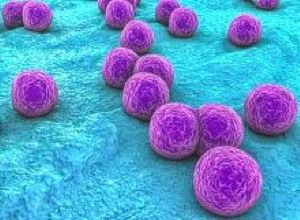The US Centres for Disease Control and Prevention (CDC) has issued new recommendations for the prevention and control of Staphylococcus aureus in neonatal intensive care unit (NICU) patients. The guidelines by researchers at Duke University School of Medicine, Durham, North Carolina, Harbor-UCLA Medical Centre, Children’s Hospitals and Clinics of Minnesota, University of Texas Health Science Centre at San Antonio, Helen DeVos Children’s Hospital Neonatal Services, Johns Hopkins University School of Medicine are based on current understanding of the transmission dynamics of S aureus in the NICU and were developed through a systematic review of the best available literature available through August 2019.
The review was guided by questions about the most effective strategies for preventing S aureus transmission from colonised or infected NICU patients, which sampling sites and laboratory assays most effectively identify colonisation in NICU patients, and what risk factors exist for S aureus infection in NICU patients.
The guidelines recommend performing active surveillance testing at regular intervals for S aureus colonisation in NICU patients when there is increased evidence of infection or in an outbreak setting, and for methicillin-resistant S aureus colonisation when there is evidence of ongoing healthcare-associated transmission.
Active surveillance can be conducted using either culture-based or polymerase chain reaction detection methods, and samples should be collected from the nostrils. The authors conditionally recommend testing of infants from other new-born care units, and targeted decolonisation for colonised NICU patients.
S aureus is the most common healthcare-associated pathogen in US NICUs, with an estimated incidence of up to 45 infections per 100,000 hospitalised infants, and rates of invasive S aureus infection are especially high in preterm and low birthweight infants. While infants may acquire the bacteria as part of their normal developing microbiota, those who are colonised with S aureus are at increased risk of infection.
A companion document from the Society for Healthcare Epidemiology of America (SHEA), published, answers some of the questions that clinicians may have about S aureus detection and prevention in the NICU.
White Paper Introduction
This white paper provides clinicians with practical guidance on the implementation of Staphylococcus aureus infection prevention measures for neonatal intensive care unit (NICU) patients. Except where otherwise specified, “S. aureus” refers to both methicillin-resistant S. aureus (MRSA) and methicillin-susceptible S. aureus (MSSA). The phrase “parents or family members” refers to all visitors that have physical contact with infants in the NICU. S. aureus is a clinically important pathogen among NICU infants. Neonates may acquire S. aureus as part of their normal developing microbiota; yet, colonization predisposes to invasive infection.1,2 Estimated incidence of S. aureus infection is up to 45 per 10,000 hospitalized infants.3-5 In a typical NICU, exposure to the NICU environment, including indirect transmission from other critically ill infants, healthcare personnel, parents and/or family members may exacerbate the burden of S. aureus colonization and infection.6,7 Despite decreasing device utilization rates within the NICU, S. aureus remains a frequent cause of healthcare-associated and device-associated infections.4 S. aureus is also a commonly identified pathogen among hospitalized neonates during infection clusters or outbreaks.8,9 Most available literature report on S. aureus prevention in the context of outbreak control; few data exist on this topic in endemic NICU settings.
Authors
Ibukunoluwa C Akinboyo, Kenneth M Zangwill, Wendy M Berg, Joseph B Cantey, Beth Huizinga, Aaron M Milstone
[link url="https://www.cidrap.umn.edu/news-perspective/2020/09/news-scan-sep-15-2020?utm_campaign=KHN%3A%20Daily%20Health%20Policy%20Report&utm_medium=email&_hsmi=95466012&_hsenc=p2ANqtz-8JloYtNtNPgNIQDJY5gtruKnM4awPq5n-eE9hHHZ1OGNM-C5jxJKy1B4vkxydbtHSJ9qIJeNGOdMjPhWcQ37Sl0T5pSg&utm_content=95466012&utm_source=hs_email"]CIDRAP material[/link]
[link url="https://www.cdc.gov/infectioncontrol/pdf/guidelines/NICU-saureus-h.pdf"]CDC Recommendations[/link]
[link url="https://www.cambridge.org/core/services/aop-cambridge-core/content/view/B54E657100142EEE0FD4AEE4CC5D824E/S0899823X20000513a.pdf/shea_neonatal_intensive_care_unit_nicu_white_paper_series_practical_approaches_to_staphylococcus_aureus_disease_prevention.pdf"]SHEA White Paper[/link]

